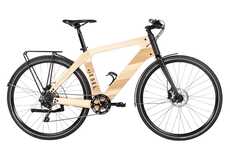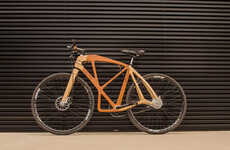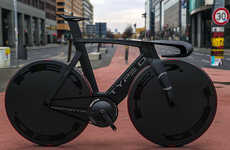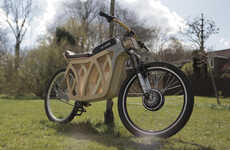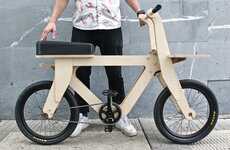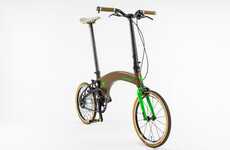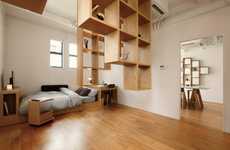
This Prototype Bicycle is Designed to Test Structural Ability
Vasiliki Marapas — May 15, 2015 — Art & Design
Designed by Martino Hutz, Mariya Korolava and Atanas Zhelev of the University of Applied Arts Vienna, this prototype bicycle was made to test the structural techniques of architectural designs.
The bike was made using thin layers of birch wood, called lamellas, which replaced the typical spring-based suspension system that informs the design of most bicycles. The layered wood design not only provides structural lightness, it also improves the strength and flexibility of the bicycle. Zhelev explains, "The bicycle is perfect to test how wooden structures work in different scales with different loads."
The ultimate objective of the bicycle was to be a lightweight ride, whilst still being capable of absorbing large shock waves. Best of all, the structural functionality of the bicycle doesn't comprise the aesthetics, which is beautiful and minimalist.
The bike was made using thin layers of birch wood, called lamellas, which replaced the typical spring-based suspension system that informs the design of most bicycles. The layered wood design not only provides structural lightness, it also improves the strength and flexibility of the bicycle. Zhelev explains, "The bicycle is perfect to test how wooden structures work in different scales with different loads."
The ultimate objective of the bicycle was to be a lightweight ride, whilst still being capable of absorbing large shock waves. Best of all, the structural functionality of the bicycle doesn't comprise the aesthetics, which is beautiful and minimalist.
Trend Themes
1. Structurally-optimized Bikes - The use of advanced structural techniques and material for bikes that improve the overall performance and aesthetics.
2. Sustainable Transportation - The use of sustainable materials and innovative design in the creation of transportation options with reduced environmental impact.
3. Testing Structural Techniques Through Prototypes - Using prototype designs in order to test and refine new structural techniques and materials for various applications.
Industry Implications
1. Transportation - Prototyping and testing wooden bikes have the potential to disrupt the bicycle and the broader transportation industry, specifically in the development of sustainable and structurally-optimized transportation options.
2. Furniture and Home Design - The techniques and tools used in designing and prototyping wooden bikes can translate into the development of structurally-optimized and aesthetically pleasing furniture and home design.
3. Architecture and Engineering - The development of advanced structural techniques and materials in designing wooden bikes can provide opportunities for architects and engineers to explore new possibilities in building design and construction methods.
5.7
Score
Popularity
Activity
Freshness


